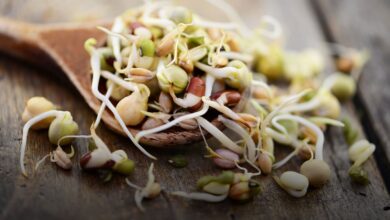Miso, your new best friend in the culinary world

Whether you're looking for a new food to enrich your kitchen or interested in healthy products, we've found what you need.
You've probably heard its name before, but you probably know miso only by reputation. Let's make presentations with this ingredient that you will soon no longer be able to do without.
Miso, that good paste
While most people are familiar with miso in its cooked form, especially the popular miso soup, this condiment initially appears in paste form.
Its composition varies, but in general we find a base of soybeans, barley or rice, as well as beans.
There are a lot of goodies that you simply have to add water and salt to, the most important of which is a fermentation called koji. This tiny mushroom has a crucial role. It is he who will ensure the fermentation of the mixture that will give the miso paste that we are looking for.
You must remember to be patient, because this process can last from a few weeks to three years.
Tip: Enjoy miso, especially if you make it yourself. We will see in the following lines that the final result can vary from one dough to another. However, if you get something that is brown to red and tastes very salty, you are usually on the right track.
Uses and customs of miso
Before that, a small cultural point is needed. Did you know that miso originally comes to us from China?
However, it was the Japanese who gave their credentials to this product, which was imported to the archipelago more than 1,300 years ago.
It has become an essential part of gastronomy in the lives of Japanese people. As proof of this, miso is used for breakfast as well as for lunch or dinner.
It is said that the Japanese use an average of 10 kilograms of this dough per year. This demonstrates the miso craze in the Land of the Rising Sun.
In the rest of the world, it was not until the advent of Asian cuisine that this ingredient and its wonderful properties were discovered.
Different types of miso
It would be virtually impossible to compile a comprehensive list of all types of miso.
There are easily hundreds, even thousands according to some. Obviously, everything depends on the ingredients used for the dough but also on the duration of fermentation.
The rule is simple, the more miso ferments, the darker and saltier it becomes.
Conversely, a light color indicates that the miso is “young” and therefore relatively mild.
However, please note that the most common miso pastes are so well represented, that they even have a name. Practical if you are looking to acquire it commercially. The good news is that there is something for everyone:
Shiro Miso
Miso is the most common and probably the least expensive for secular palates. Light beige in color, shiro miso has not been hardly fermented, and therefore has a somewhat mild miso taste.
It is also known as miso
Miso can be identified by its red color. Its taste is stronger and much saltier than the so-called “young” mesos.
Mugi miso
Like shiro miso, mogi miso is a very mild condiment. The main difference between the two is the presence of roasted barley in the recipe.
Kumi miso
For its part, komi miso uses rice as the main ingredient. This is what gives it its usual white color, although it can be red or yellow depending on the situation. In terms of flavour, we actually use a slightly stronger miso.
Mami miso
Mami miso is most notable for its reddish-brown color. Once again, its peculiarity remains its composition. In this case, the mame miso is made only from soybeans, which is unique.
Hacho miso
If you are looking for strong (culinary) sensations, you should turn to Hacho Miso. Its black color immediately indicates that we are dealing with a strong man in the art of gastronomy, which is confirmed once in the mouth by its incomparable salty taste.
A word of caution, however: the fermentation process of some artificial miso is accelerated using artificial additives, causing them to lose some of the taste and properties of the miso.
For the same reasons, unpasteurized, preservative-free miso is also preferred.
Miso contributions
The taste of miso has earned its reputation, but the paste deserves to be known for the benefits it brings to our health.
Did you know, for example, that miso is a particularly healthy product?
Its fat intake is actually very low, making it an ideal ally as part of a slimming diet.
The dough that interests us today turns out to be an excellent alternative to salt for preparing your dishes.
However, it offers all the benefits of its taste without any of the harms it can cause to our health.
Image rights © Adobe Stock
Additionally, miso is very low in dietary fiber. However, it remains your best friend in case of digestive problems. Rich in natural probiotics, it contains a lot of lactobacilli which, among other things, help to remove toxins from the body but also and above all ensure good health of the intestinal flora, thus ensuring good digestion.
Miso is also a good source of vitamins and minerals. You will find it to be a good source of B vitamins and Vitamin K.
The same applies to sodium, iron, zinc, and even linoleic acid. It also contains all essential amino acids.
But the best news is still eating plenty of plant protein. Miso becomes an interesting alternative to replace the nutritional benefits of meat. Therefore, it is ideal for being part of a vegetarian or vegan diet.
Using miso: instructions for use
To incorporate miso into your dishes, nothing could be easier. Just add a few at the end of cooking to your dishes or sauces.
Be careful not to boil it so as not to lose all the benefits it can provide.
Also remember to use the paste in small quantities. A teaspoon is usually enough to enhance the flavor of any meal. After use, no problem, as miso keeps well in the refrigerator.
Miso, your new best friend in the culinary world


